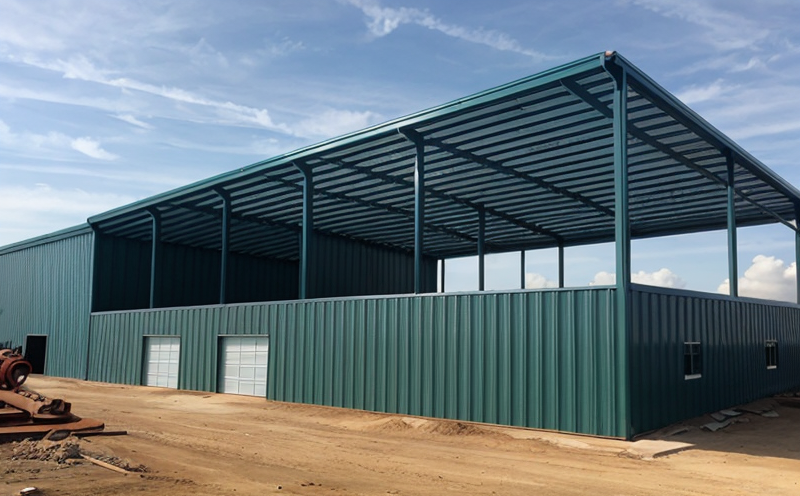IEC 60068-2-30 Humidity Resistance Endurance of Smart Home Devices
The IEC 60068-2-30 standard defines the procedure for determining the resistance to humidity endurance of electrical and electronic equipment. This test is crucial in ensuring that smart home devices, which often incorporate complex electronics, can withstand the environmental conditions they are likely to encounter during their lifecycle.
The test involves exposing specimens to a specific combination of temperature and relative humidity levels over an extended period. The aim is to assess how well these devices perform under prolonged exposure to high humidity without suffering from short circuits or other failures that could compromise functionality. This testing ensures the reliability and longevity of smart home devices, which are increasingly integrated into residential settings.
The test is particularly important for devices like thermostats, lighting controls, security systems, and other connected appliances because they must continue to operate correctly even in humid environments such as bathrooms or laundry rooms. The standard provides a structured approach to simulating real-world conditions that these devices might encounter, thereby helping manufacturers design products that meet international quality standards.
During the test, specimens are placed in an environmental chamber where temperature and humidity levels are carefully controlled according to specified parameters defined by IEC 60068-2-30. The duration of exposure varies depending on the specific requirements of the product being tested but typically lasts for several hours or days. After the test, engineers evaluate the performance of each specimen to ensure it meets all necessary criteria.
Understanding the nuances of this testing process is essential for anyone involved in developing or manufacturing smart home devices. By adhering to IEC 60068-2-30 guidelines, companies can produce products that not only meet but exceed industry expectations regarding durability and reliability. Additionally, compliance with these standards helps avoid potential issues down the line when deploying large-scale installations of interconnected systems.
For quality managers responsible for ensuring product integrity across various environments, understanding humidity resistance testing is vital. Compliance officers play a key role in verifying that all products comply with relevant regulations and industry best practices. R&D engineers benefit greatly from this knowledge as they refine designs to better withstand harsh conditions while maintaining optimal performance levels.
Proper specimen preparation prior to testing ensures accurate results, which directly impacts the overall quality of the end product. Specimens should be representative samples that accurately reflect typical usage scenarios within intended applications. Engineers must ensure proper installation procedures are followed during both development phases and subsequent production runs.
Benefits
- Enhanced Product Reliability: Ensures smart home devices can function reliably in humid environments, extending product life expectancy.
- Regulatory Compliance: Helps manufacturers meet international standards, facilitating smoother entry into global markets.
- Potential Cost Savings: By identifying potential issues early in the development cycle, companies can reduce warranty costs and improve customer satisfaction.
- Innovation Support: Encourages continuous improvement through rigorous testing protocols that foster innovation within design teams.
The benefits of adhering to IEC 60068-2-30 extend beyond just meeting regulatory requirements; they also contribute significantly towards building trust among consumers who increasingly rely on smart home technologies for convenience and security. Through comprehensive testing, companies demonstrate their commitment to delivering high-quality products that stand the test of time.
Why Choose This Test
Selecting IEC 60068-2-30 for your smart home device testing offers several advantages. Firstly, it provides a standardized method to evaluate the performance of electronic components under extreme humidity conditions. This standardization ensures consistency across different manufacturers and regions, making comparisons easier and more meaningful.
Secondly, choosing this test allows companies to gain insights into how their products will perform in various real-world scenarios. By simulating actual environmental stresses during testing, engineers can identify any weaknesses or areas for improvement early on in the design process. This proactive approach helps prevent costly recalls and repairs later down the line.
Thirdly, compliance with IEC 60068-2-30 demonstrates a commitment to quality assurance that builds consumer confidence. In an era where technology is rapidly evolving, consumers are more discerning than ever before when it comes to choosing reliable products for their homes. By adhering to recognized standards like this one, companies can position themselves as leaders in the market.
Finally, selecting IEC 60068-2-30 supports long-term business sustainability by fostering innovation and continuous improvement within design teams. As technology continues to advance at an unprecedented pace, having robust testing protocols in place ensures that products remain competitive over time.





